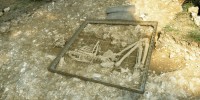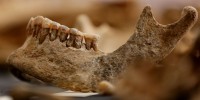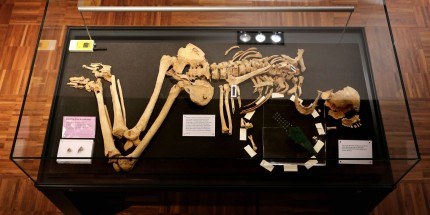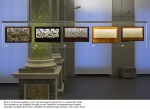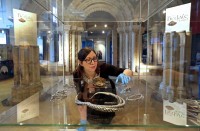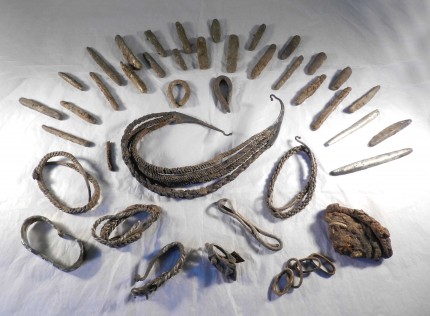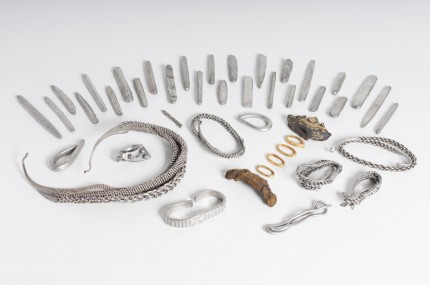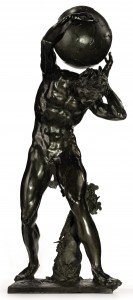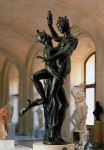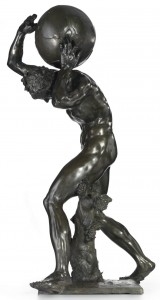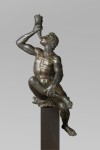Okay I’m just going to say it: the National Library of Norway is the POMPEII OF FILM. And thus I too succumb to the irresistible urge to call Pompeii on a discovery that is nothing like Pompeii except insofar as something thought to have been destroyed, possibly in an apocalyptic firestorm, was actually found to have survived. Earlier this year the library made the news for its discovery of the only known copy of the 1927 Chinese silent epic Pan Si Dong (The Cave of the Silken Web). Now they’ve identified another silent treasure: Empty Socks, a 1927 Disney short starring Oswald the Lucky Rabbit, that was thought lost except for a 25-second clip in the care of the Museum of Modern Art in New York.
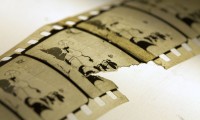 The short was discovered in 2008 during a review of the National Library’s archive of nitrate films. The two reels were not clearly labelled so archivists didn’t know which film it was. The reels had once belonged to Norwegian collector Tor Eide who gave them to the Norwegian Film Institute. The NFI gave its collection of nitrate films to the National Library in 2007, and ever since then archivists have been going through the nitrate films to identify, restore, copy and digitize them.
The short was discovered in 2008 during a review of the National Library’s archive of nitrate films. The two reels were not clearly labelled so archivists didn’t know which film it was. The reels had once belonged to Norwegian collector Tor Eide who gave them to the Norwegian Film Institute. The NFI gave its collection of nitrate films to the National Library in 2007, and ever since then archivists have been going through the nitrate films to identify, restore, copy and digitize them.
This is a dangerous vocation. The nitrate film archives are kept in a custom-built climate-and-moisture controlled secure bunker near rock caves in the subarctic town of Mo i Rana. The high security bunker in a remote, cold location is a necessary precaution because the nitrocellulose compound used to make most motion pictures from the late 1880s through 1951 is insanely flammable. A little warmth or pressure and it explodes with more force than gunpowder. It doesn’t even need oxygen to burn because it produces its own oxygen during combustion. It also burns under water. The powder it biodegrades into spontaneously ignites even harder than the intact film. Handling nitrate films is therefore a highly regulated process with extensive security measures to protect the people and facilities from deadly consequences. The Mo i Rana bunker is partitioned into cells with fireproof walls to ensure that if there is a fire, it will be limited in scope. Every time a nitrate movie is taken out of the warehouse for study, it has to be left to temper for at least a day so the sudden increase in temperature won’t set it off.
Library film archivists Kvale Sørenssen and Tone Føreland didn’t recognize the story at first glance, but they wrote a detailed summary of the action. Føreland noted in the description that he thought it might be a Felix the Cat picture because one of the characters resembled Otto Messmer’s iconic feline. In March of this year, comic writer, illustrator, animation historian and former Disney archivist David Gerstein contacted the National Library after coming across some documents that suggested there could be lost Disney films in the library’s archives. He had already had success in Norway, discovering the 1928 Oswald the Lucy Rabbit short Tall Timber in the archives of the Norwegian Film Institute in 2007. The library sent him a list of film titles, but it was Føreland’s description of the untitled possible Felix the Cat short that caught his eye. Gerstein recognized the action as the plot of Empty Socks.
 The first Christmas movie ever made by Disney, Empty Socks features Oswald the Lucky Rabbit playing Santa to some orphans, but his good intentions can’t save him from youthful rapscallionry. The little terrors set fire to a chair and the fire spreads through the home. When Oswald tries to douse the flames with a hose connected to the fire hydrant, the orphans connect the hose to a fuel tank instead and the orphanage blows up. The National Library’s film is missing between 30 seconds and a minute in the middle of the short (the sequence when Oswald hands out the presents ending up when the kids light the chair on fire) for a total running time of five minutes and 30 seconds.
The first Christmas movie ever made by Disney, Empty Socks features Oswald the Lucky Rabbit playing Santa to some orphans, but his good intentions can’t save him from youthful rapscallionry. The little terrors set fire to a chair and the fire spreads through the home. When Oswald tries to douse the flames with a hose connected to the fire hydrant, the orphans connect the hose to a fuel tank instead and the orphanage blows up. The National Library’s film is missing between 30 seconds and a minute in the middle of the short (the sequence when Oswald hands out the presents ending up when the kids light the chair on fire) for a total running time of five minutes and 30 seconds.
On December 17th, the National Library in Oslo will do a viewing of the restored short and Tall Timber. Tall Timber wasn’t lost, but it is very rare, and it’s notable for being the last surviving Oswald picture directed by Walt Disney. Film archivist Kjetil Kvale Sørenssen and animated film historian Gunnar Strøm will introduce the shorts which will be shown with live piano accompaniment as is proper for the live silent movie viewing experience. The event is already fully booked.
No word on a wider release of the film. The National Library sent a digital copy of the restored film to the Walt Disney Company, The original nitrate will stay safe in National Library’s subarctic bunker.

